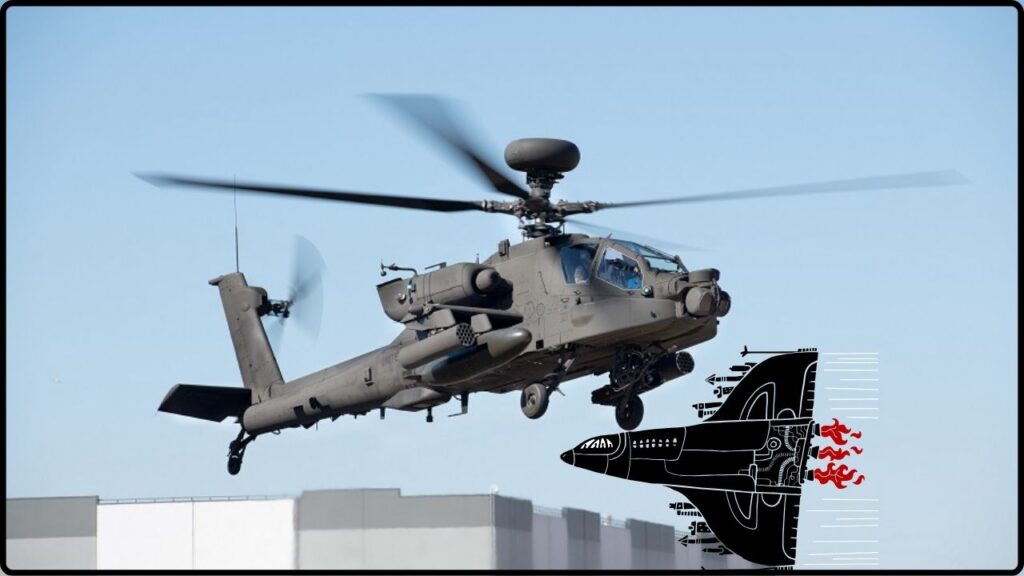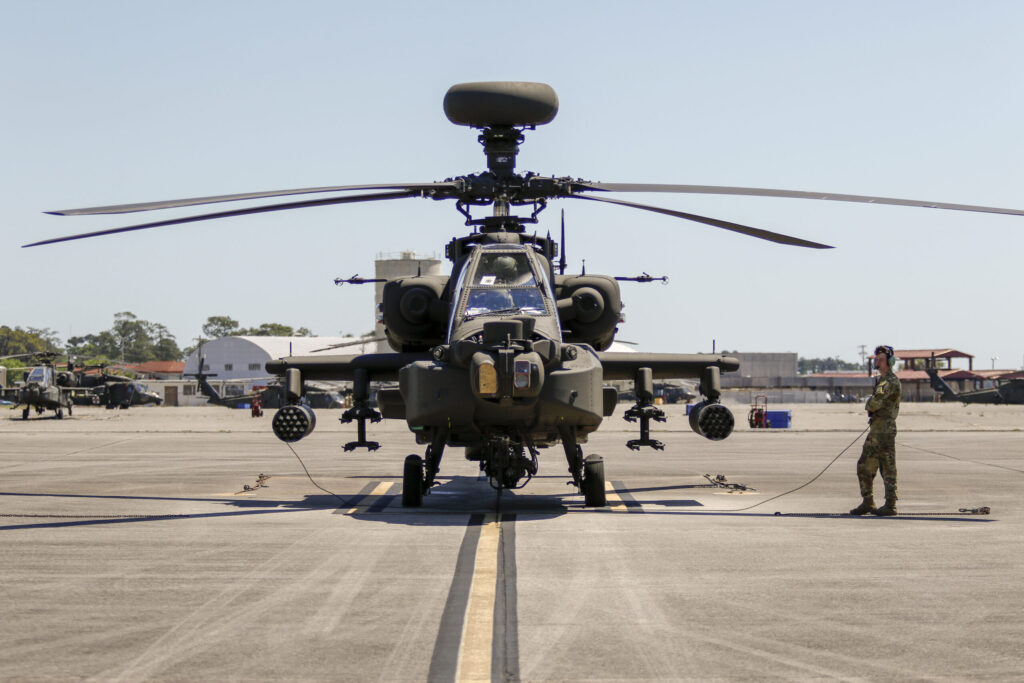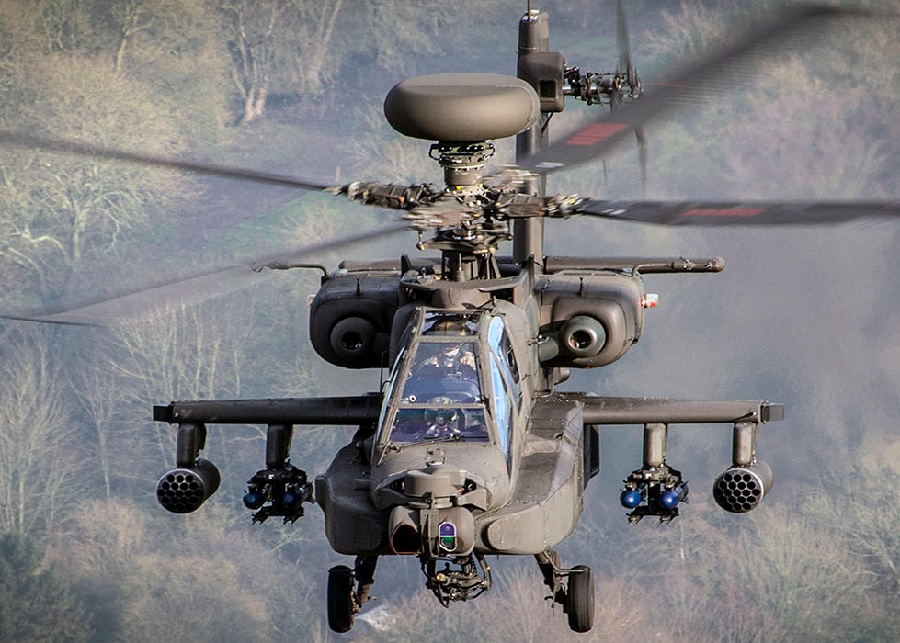
Dutch Apaches Now Armed with Cutting‑Edge AGM‑179A Missiles: The phrase “Dutch Apaches now armed with AGM‑179A missiles” marks more than a technical upgrade—it signals a historic leap in battlefield capability, NATO unity, and Dutch defense modernization. This moment makes the Netherlands the first international user of the AGM‑179A Joint Air-to-Ground Missile (JAGM) on AH‑64E Apache helicopters, showcasing a strategic alignment with U.S. defense technologies and evolving global threats. On June 12, 2025, the U.S. State Department approved a $215 million Foreign Military Sale (FMS) to the Netherlands. The deal includes 296 AGM‑179A missiles, training variants, support equipment, spare parts, and technical assistance. For military experts, analysts, and aviation fans alike, this is one of the biggest upgrades to European rotary-wing firepower in years.
Dutch Apaches Now Armed with Cutting‑Edge AGM‑179A Missiles
The Netherlands’ adoption of the AGM‑179A JAGM missile for its Apache fleet isn’t just an upgrade—it’s a powerful signal to friends and foes alike. It shows that NATO’s smaller nations can lead by example, embracing the future of warfare with smart, networked, and resilient weapon systems. This $215 million investment gives Dutch forces the upper hand in any weather, any terrain, against any adversary—and sets the bar for others to follow.
| Key Point | Details & Data |
|---|---|
| Sale Approved | June 12, 2025; USD 215 million |
| Missiles Delivered | 296 AGM‑179A JAGM + Captive Air Training Missiles (CATM) |
| Integration Platform | AH‑64E Apache (Royal Netherlands Air Force) |
| Missile Specs | Length: 1.78 m; Weight: 49 kg; Range: 8+ km |
| Seeker Technology | Dual-mode: Semi-active laser & millimetre-wave radar |
| Replaces | AGM‑114 Hellfire |
| Interoperability | Compatible with existing Hellfire rail systems |
| Strategic Impact | Strengthens NATO unity and deterrence posture |
| Training & Delivery Timeline | U.S.-based training in 2026; full integration by late 2026 |
| DSCA Official Report | Source for FMS details |
Why It Matters: Technology + Timing
For the Netherlands, this isn’t just about new missiles—it’s a statement of readiness and resolve. Dutch defense planners have been eyeing precision-guided solutions that are flexible, survivable, and modern. The older AGM‑114 Hellfire missiles, while battle-tested, have limitations in bad weather or electronic warfare conditions.
The AGM‑179A JAGM changes all that.
Developed by Lockheed Martin, the JAGM is a dual-mode, all-weather missile designed to take on tanks, vehicles, bunkers, boats, and even moving infantry units in a single strike. Its dual seeker technology combines the pinpoint accuracy of a laser with the see-through-everything capability of millimeter-wave radar.
In layman’s terms? This missile is like a smart bullet with GPS, night vision, and AI—all rolled into one.

Evolution from Hellfire to JAGM
To understand how big this is, we need to step back a bit.
The AGM‑114 Hellfire has served U.S. and allied forces for over four decades. It’s proven in Iraq, Afghanistan, Syria, and dozens of other hotspots. But it’s built for a world of clear skies and limited countermeasures.
Today’s adversaries use smoke screens, jammers, electronic warfare, and decoys—and that’s where Hellfire starts to fall short.
Enter JAGM. Born from the U.S. Army and Navy’s joint need for an adaptable air-to-ground weapon, it merges the best features of the Hellfire and Longbow missile families with upgraded seeker and targeting software.
With a range of 8+ kilometers, it can hit targets from a safe stand-off distance, even when GPS is jammed or lasers are scattered by dust or fog.
Technical Comparison: AGM‑179A vs AGM‑114
| Feature | AGM‑179A JAGM | AGM‑114 Hellfire |
|---|---|---|
| Guidance | Dual-mode: Laser + Radar | Single-mode: Laser |
| Range | 8+ km | Up to 8 km |
| Weather Performance | All-weather capable | Line-of-sight dependent |
| Compatibility | Works with Hellfire launchers | Apache-specific |
| Seeker Sensitivity | Resistant to jamming/smoke | Easily disrupted |
| Target Types | Tanks, vehicles, infantry, bunkers | Armor & static targets |
| Cost per unit (est.) | $250K+ | $115K–$180K |
Dutch Apaches Now Armed with Cutting‑Edge AGM‑179A Missiles Modernization Strategy
This missile buy fits into a much larger picture.
In the “Defensievisie 2035” (Defense Vision 2035), the Netherlands laid out a long-term plan to:
- Modernize its platforms for multi-domain operations
- Enhance interoperability with NATO
- Adopt AI-enhanced and precision-guided systems
- Prepare for urban and hybrid warfare
By upgrading Apache capabilities with JAGM, the Dutch Air Force gets the tools it needs to fulfill all four goals—and fast.
According to the Dutch Ministry of Defence, more than €5 billion is being allocated toward tech upgrades by 2030, with a focus on air power, cyber, and rapid deployment tools.

The Broader NATO Impact
This isn’t just a Dutch win—it’s a NATO milestone.
With the U.S., Poland, Romania, and the U.K. also exploring or adopting JAGM, a clear trend is emerging: NATO wants modular, scalable, and digitally connected strike systems.
By equipping multiple allies with the same smart munitions, the alliance can:
- Train together more efficiently
- Share logistics and parts
- Deploy joint air units with shared tactics
- Maintain regional deterrence
This is especially critical with rising tensions in Eastern Europe, Arctic regions, and around NATO’s eastern flank.
What Happens Next: Integration & Training Timeline
Here’s how this is expected to roll out:
Phase 1: Logistics & Delivery
- First missiles arrive in early 2026
- Includes live and training rounds
Phase 2: Training
- Dutch crews train at Fort Rucker, Alabama (US Army Aviation Center of Excellence)
- Followed by live-fire certification at White Sands Missile Range, New Mexico
Phase 3: Deployment
- Full operational capability targeted by late 2026
- Joint NATO exercises may showcase the new capabilities by 2027

Practical Benefits for Operators
Whether you’re a pilot, planner, or policymaker, here’s why this matters:
- Fewer Missiles, More Missions: JAGM can adapt to various targets, reducing the need for mission-specific ordnance.
- Higher Survivability: Stand-off range keeps helicopters away from MANPADS and small arms fire.
- Smoother Target Acquisition: No need for constant laser designation—radar locks in under cover or fog.
- Lower Training Curve: Uses same control systems and pylons as Hellfire; minimal retraining needed.
Expert Insights
“The Dutch decision to go with JAGM isn’t just about buying new gear—it’s about changing the rules of engagement. It reflects a smarter, faster, more resilient air force,” said Lt. Gen. J.D. Harris (Ret.), former USAFE Deputy Commander.
Lockheed Martin representatives added that “JAGM’s proven performance with the U.S. Army and Marine Corps gives allies like the Netherlands a proven edge from Day One.”
Potential Challenges
No program is without hurdles. Here’s what experts are watching:
- Cost Overruns: Advanced missiles aren’t cheap. Budget trade-offs may hit other modernization efforts.
- Training Bottlenecks: U.S. training slots are limited; increased demand could cause backlogs.
- Industrial Offsets: Dutch industry may push for more local work on future missile batches.
- Cybersecurity: Networked munitions raise the risk of digital espionage or sabotage if not properly secured.
Nonetheless, the benefits currently outweigh the risks.
NASA Just Discovered Solar Curtains on the Sun—Here’s How This Plasma Spectacle Forms
Not a Hurricane, Not a War—But This Disaster May Spike U.S. Gas Prices Overnight
No Gas, No Diesel; Rehlko’s New Engine Shocks America with Bold Electric-Hydrogen Fusion
Frequently Asked Questions (FAQs)
Q1: Will JAGM replace Hellfire entirely?
A: Eventually, yes. The U.S. plans to phase out the Hellfire, and allies will likely follow suit.
Q2: Can JAGM be used on drones?
A: Yes. It’s already integrated on MQ‑9 Reapers and other U.S. UAVs.
Q3: Why did the Netherlands go first?
A: The Dutch are early adopters and close NATO allies with strong procurement ties to the U.S.
Q4: Will other NATO countries follow?
A: Poland, Romania, Finland, and Norway are actively evaluating or negotiating similar deals.
Q5: What makes dual-mode seekers so powerful?
A: They allow missiles to lock onto a target with radar when the laser fails—giving you flexibility and assurance in real combat.











